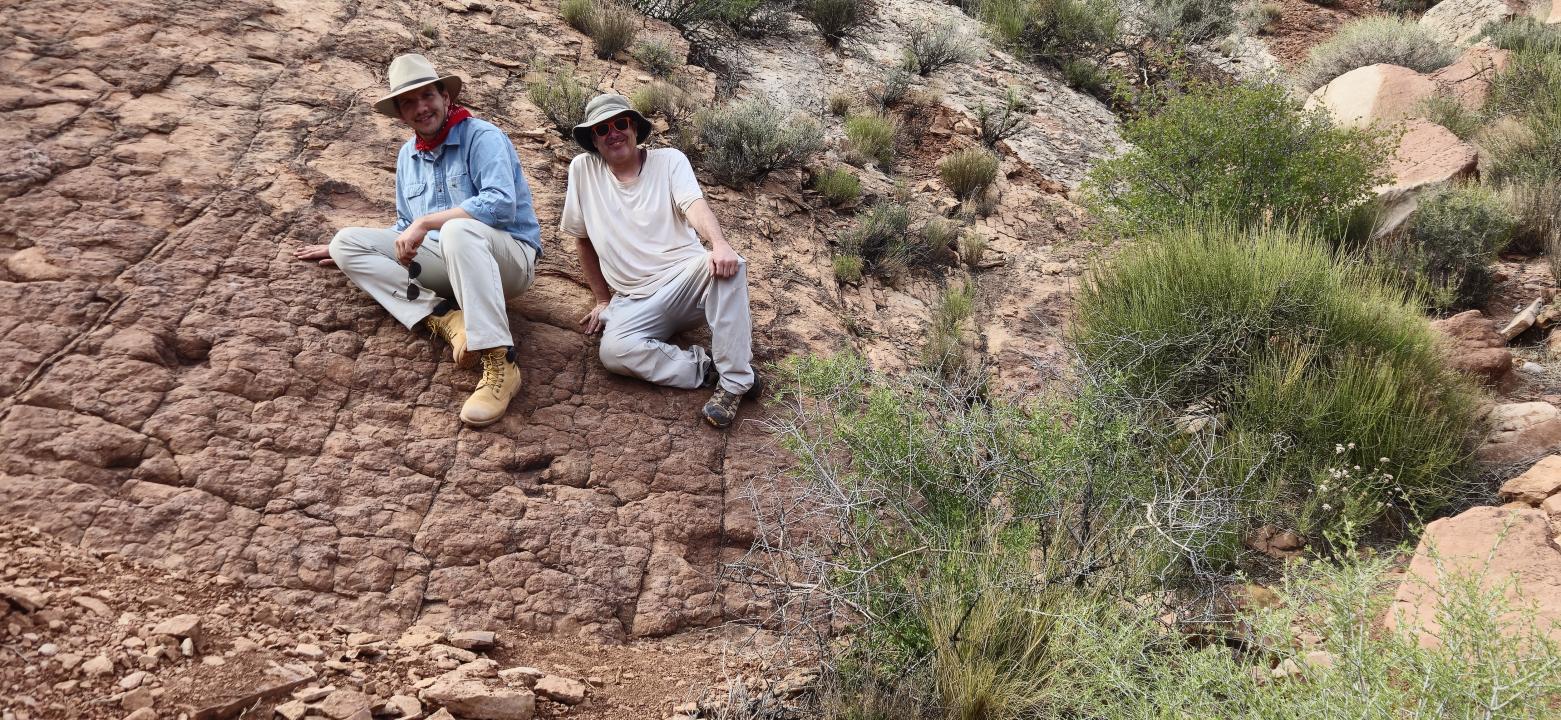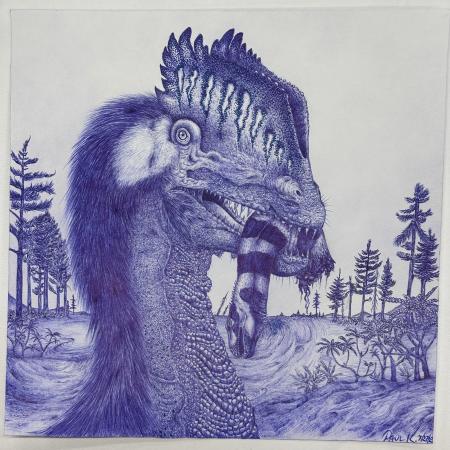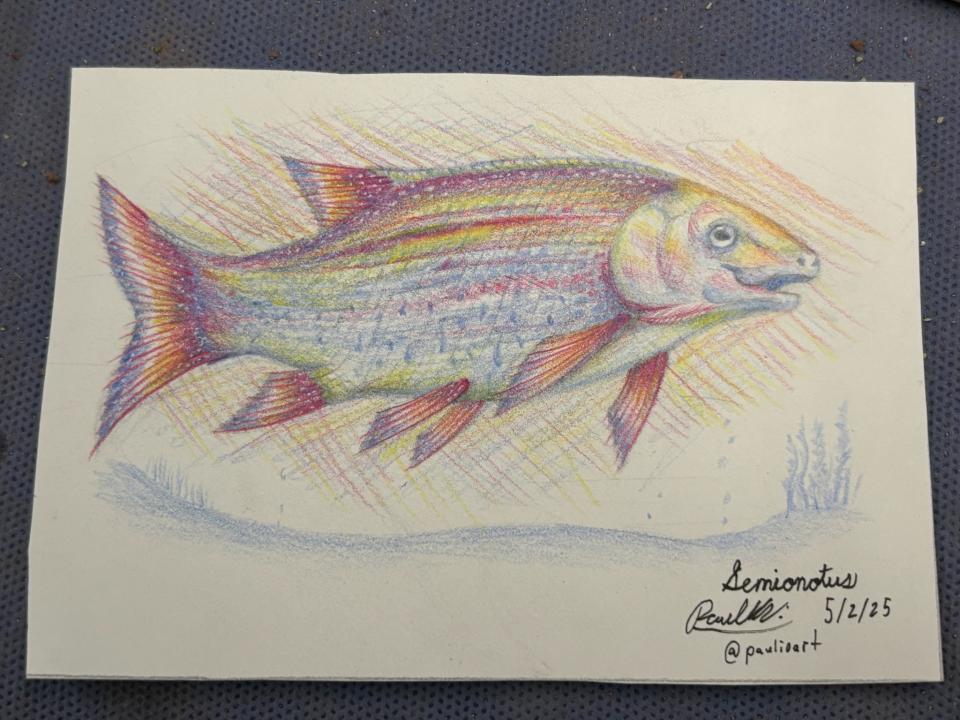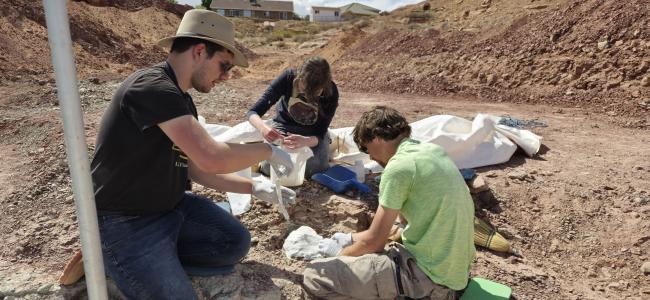June 26, 2025
It’s probably pretty rare to receive an SOS from an animal that lived 200 million years ago. But in May, GRCC student Paul Kuchnicki answered such a call, and it fueled his passion for paleontology.
“I’ve been hyper-focused on dinosaurs since I was a kid,” Kuchnicki said. “I used to watch movies and documentaries about paleontologists and think, ‘I could do that!’”
His enthusiasm was put on hold for a bit as Paul struggled to figure out a career direction after high school.
“I graduated from high school in 2018 and started to pursue an art degree, but I was not focused and my grades suffered,” Kuchnicki said. “I took a break when COVID hit, and then struggled with a period of depression and loneliness. My mom finally pushed me to go back to school in 2024.”

One of his art professors found out about Paul’s passion for paleontology and was amazed by the art he created around his favorite subject matter, dinosaurs. She encouraged him to switch degrees.
“I changed to a geology major and started earning straight As,” Kuchnicki said. “It’s the best decision I ever made. I’m hitting the books hard, and Professor VanRegenmorter has been a huge help. He’s the one who told me about the dig in Utah. I couldn’t be more grateful for that opportunity.”
On March 21, 2025, the Salt Lake City Times published a call for volunteers to locate and remove as many fossil remains as they could find in a one-acre quarry just north of St. George’s Dinosaur Discovery Site museum. Volunteers were racing against time because In May, excavation would end so construction of a new electric power substation could begin.

GRCC adjunct professor John VanRegenmorter is also a self-proclaimed “kid who never outgrew dinosaurs.” He signed up to help, and he invited Paul to go with him. Paul paid his own way for this first-ever, hands-on field experience and says it broadened his perspective on the world.
“Aside from the dust devils and scorching heat, I loved it!” Kuchnicki said. “I felt like I was traveling back in time and discovering the secrets of an era as I hammered through the earth. You never know what could be in the layers of rock. There’s a slim chance you’ll find something groundbreaking, but my priority was just to discover and be curious. It’s humbling to work with a group of people who are so passionate about preserving the past.”
Paul spent a week learning to properly excavate the delicate fossils, and how to apply plaster to chunks of rock containing fossils. The plaster casts reinforced the fossils so they could be safely transported to the nearby fossil lab at St. George Discovery Site Museum where they would be excavated and then studied. He was also able to help out at the Museum, learning how to catalog and curate the fossils for scientific study.
“This location has a rich abundance of fossil material,” Kuchnicki said. “We were working at the Moenave Formation that dates back 190 million years ago. It’s an exceptional formation that gives us a faint glimpse of the dinosaurs and how they became a successful group. There are thousands of dinosaur tracks there. The tracks, plus other fossils, show that the whole area was at one time a vast inland lake the size of Lake Erie, with rich biodiversity.”
Paul plans to transfer to University of Michigan or Calvin University to pursue a bachelor’s degree — or higher. He would like to be a geology or biology professor, but he’s also exploring paleoart, where science and creativity intersect.

“I’m also interested in paleo-artistry,” Kuchnicki said. “It’s important to make scientifically informed drawings of prehistoric life. Drawings by artificial intelligence stray far from the truth. It’s crucial to communicate and teach through drawings that reflect what we know to be true.”
Paul has a simple piece of advice for others who are unsure of their next move.
“I don’t think I will be famous, but I’m doing something I love,” Kuchnicki said. “This all stems back to what fascinated me as a kid. If you’re not sure what to do with your life, think like a kid again!”
Learn more about GRCC’s Pre-Geology program.
Article reported by Julie Hordyk
